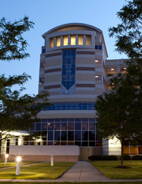 Cleanzine: your weekly cleaning and hygiene industry newsletter 10th July 2025 Issue no. 1170
Cleanzine: your weekly cleaning and hygiene industry newsletter 10th July 2025 Issue no. 1170
Your industry news - first
The original and best - for over 20 years!
We strongly recommend viewing Cleanzine full size in your web browser. Click our masthead above to visit our website version.
OhioHealth and IBM scientists join forces to prevent infections in hospitals
 OhioHealth and IBM have announced a collaboration designed to help prevent infections, using a first-of-a-kind network of wireless sensors and real-time Big Data analytics that measure hand-washing practices.
OhioHealth and IBM have announced a collaboration designed to help prevent infections, using a first-of-a-kind network of wireless sensors and real-time Big Data analytics that measure hand-washing practices.
OhioHealth will use the technology to provide hospital administrators with real-time data that can be used to reduce healthcare associated infections like methicillin-resistant staphylococcus aureus MRSA and Clostridium difficile, which affect 1 in every 20 patients in US healthcare facilities.
Already, the pilot project in Columbus has achieved more than 90% compliance with hand-washing standards - a 20% jump over its previous practices and well above the 50% national compliance level.
The US Center for Disease Control & Prevention estimates that nearly 2 million US patients contract HAIs each year, with 90,000 dying as a result. HAIs are also estimated to cost the US healthcare system $4.5 billion in related medical expenses every year. Hand hygiene is cited as the most effective way to prevent the spread of HAIs and hospitals are aggressively working to elevate hand washing compliance to 100%.
The newly installed IBM technology at one of its Columbus hospitals provides OhioHealth's hospital staff with new information and observations that were not available before. Analysing hand-washing data gives stakeholders deep insights into the compliance levels of different departments, shifts, job roles, as well as variations based on other social behavioural factors. The real-time information is used to alert hospital personnel when proper hygiene habits are not being followed so that corrective action can be taken to reduce germ exposure to patients.
"OhioHealth is always looking for smarter ways to protect the health of our patients," announced Michael Krouse, Sr. VP & CIO OhioHealth, OhioHealth. "Superbugs like MRSA can live for hours on surfaces, and we want to do everything we can to protect our patients from these kinds of serious infections. Working with IBM, we will gain additional insights that will help us consistently achieve total compliance with hand-washing standards and fight back against these bugs."
The IBM customised technology deployed at an OhioHealth hospital in Columbus, was installed at all hand-washing stations where it measures the hand-washing compliance of hospital staff through radio frequency identification technology which is integrated with a mesh network of wireless sensors that collect data which is then analysed by IBM's system. The system has improved the quality and accuracy of tracking data and delivers compliance information to hospital administrators 100 times faster than the hospital's previous surveillance methods.
"Hospitals everywhere are grappling with ways to prevent infections and we believe OhioHealth's forward-thinking approach will raise the bar for the entire industry," said Dr. Sergio Bermudez, an IBM research scientist. "Innovative organisations like OhioHealth are leveraging the power of technology to provide smarter care for their patients to improve quality while reducing cost."
The joint effort of OhioHealth, IBM Research and IBM Global Business Services represents a milestone in how healthcare facilities can more efficiently track their progress in hand hygiene promotion, plan for improvements and set new goals.
In detail, the solution developed by IBM Research and OhioHealth combines two technologies to measure and analyse hand hygiene:
Hand-washing Sensors: Developed by IBM Research, Low-power Mote Technologies (LMT) with built-in RFID capabilities measure and control physical systems, such as hand-washing stations. The LMT sensors are located at hand-washing stations in patient rooms and hallways, and are connected through a wireless mesh network. They capture time-stamped information on use of each hand washing station. They also detect when hospital staff enter or exist patient rooms and, thanks to their RFID technology, they are able to identify healthcare workers.
Data Analytics: Measurement and Managements Technologies (MMT) were created by IBM researchers to collect, manage and process real-time data. The hand-washing data is streamed via cloud technology to the MMT where it is analysed and stored to be used for on-demand reports, presentations and compliance studies. The analytics use the raw data streamed by the motes to determine whether or not hand washing events took place. The on-demand data can be used to estimate compliance levels, trends and correlations for different departments, shifts and job roles.
www.ibm.com
www.ibm.com
www.ohiohealth.com
6th February 2014







